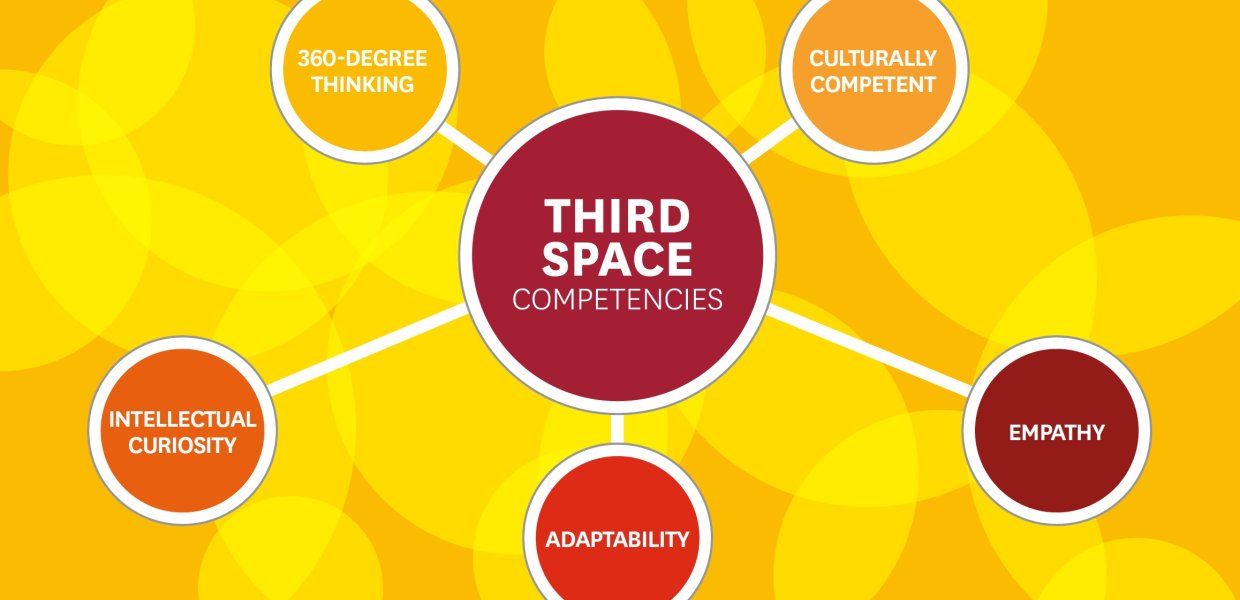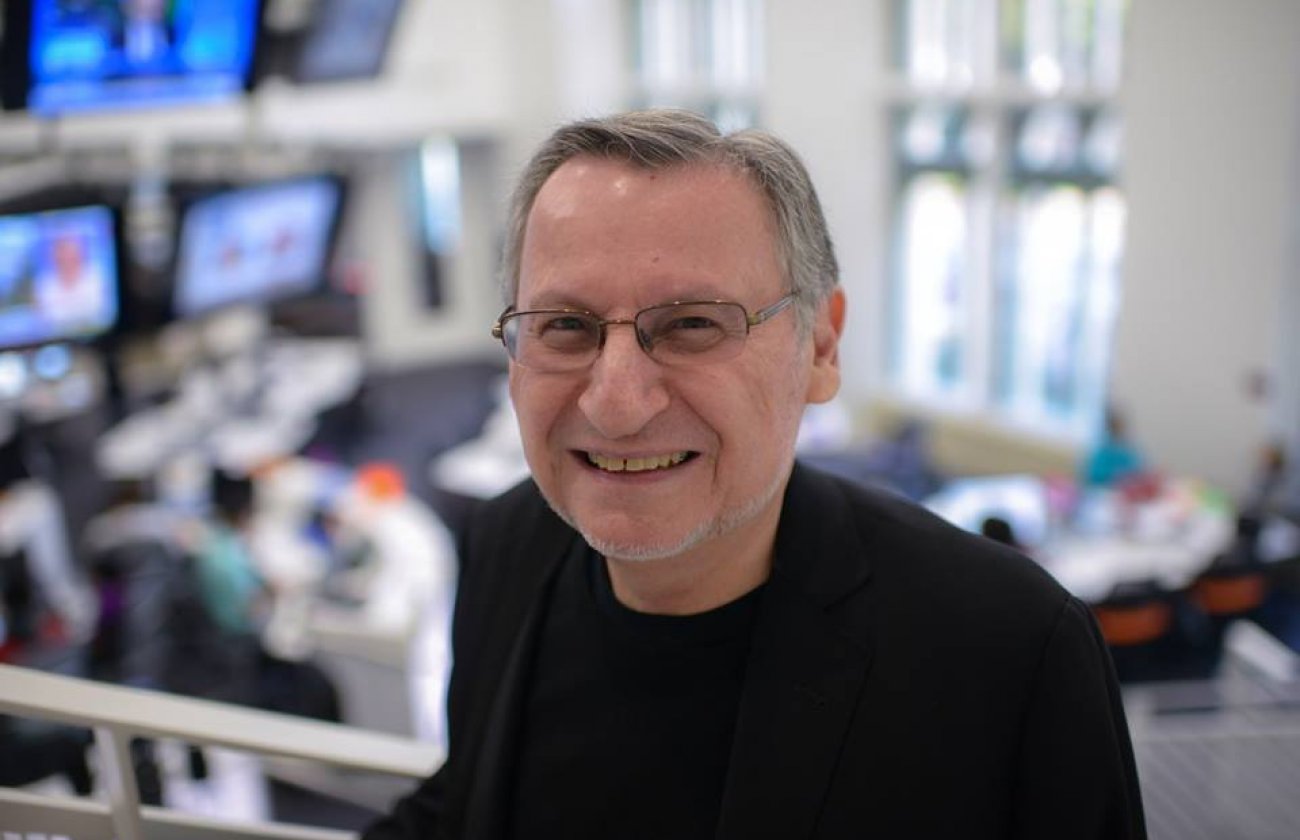On November 7, sixty-five leading executives from across a range of industries, companies and institutions gathered in Wallis Annenberg Hall for Annenberg Forum 2014. This national convening addressed the single most important issue facing business leaders around the world: Attracting, retaining and deploying effectively a new kind of superior talent for the digital age. [Boston Consulting Group.] This latest milestone in the ongoing USC Annenberg research and action project led by Dean Ernest J. Wilson III included the release of the Dean's working paper, "The $1 Trillion Talent Gap: What It is, and What You Can Do About it," as well as discussion about what is the Third Space, and what are "Third Space Talents" and "Third Space Thinking."
A massive, urgent talent gap is draining companies and preventing them from innovating and moving forward today. According to a Boston Consulting Group survey, 76% of senior executives rank talent management the biggest blind spot in their companies. The McKinsey Global Institute has found that between $900 billion and $1.3 trillion is missing from the economy, due to — in short — time wasted on inefficient and ineffective communication and collaboration.
What exactly is this blind spot, and why is there such a huge talent gap? Companies, academics and research firms have attempted to answer these questions in various ways, but to date there has been no comprehensive attempt to synthesize their findings or definitively identify the real capabilities of those people who can fill the gap. For this reason, USC Annenberg’s Third Space researchers conducted our own inquiry, asking 75 senior executives in companies in various industries and around the world what kind of talent is in highest demand. The resounding answer is “not more MBAs or engineers.” Rather, companies want leaders who are collaborative, creative, communicative and flexible, and who can help propel the organization forward with projects that are both more innovative and effective than what they have previously undertaken.
Next, we partnered with Korn Ferry, the world’s largest executive search firm to crunch the numbers on nearly 2,000 members of the firm’s extensive database. This brought further quantitative analytics to our Third Space research.
For some time now, it’s been understood that ‘soft skills’ such as creativity, collaboration and an ability to communicate are crucially important. These findings have been repeatedly borne out by research from Korn Ferry, Deloitte, IBM and others, and they are not unique or new. What is new are our specific research findings we are presenting, as well as our framework for describing the specific skill-set of what we call “Third Space thinkers.” Others have looked at the competencies and skills needed to capture opportunities, but not thought that these could all be contained within a single person with inherent or cultivated competencies.
Until now, no one has been able to describe the person who will fill the gap. This is the first time anyone has been able to encapsulate the person who embodies the characteristics and will provide the skills and talent that companies across sectors are starving for.
We define the Third Space as an area of capability that intersects and overlaps with harder skills in business, engineering and other industries — in a way that makes the person who lives in this space extremely valuable to the organization.
People who occupy this space are characterized by a general mindset that includes the characteristics of adaptability, 360-degree thinking, intellectual curiosity, cultural competence (the ability to think, act and move across boundaries) and empathy. When provided with additional training and development in complementary “hard” skills, people demonstrating such characteristics are ideally suited to fulfill collaborative leadership roles.
Over the past generation, the Internet and the attendant social media revolution have turned the world inside out. The traditional broadcast model of communication is increasingly obsolete as billions around the planet are creating and disseminating their own information via Facebook, Twitter, Instagram, Pinterest, YouTube and other tools. This revolution is analogous to that which occurred in the 19th century, as agrarian societies transformed to industrial ones. While that transformation took place over more than a century, the current switch to a technologically mediated society, which has networked human-human communication at its center, has occurred practically overnight, and this phenomenon will only continue to speed up as billions more around the globe tap into the Internet.
As Jon Iwata, a USC Annenberg Third Space Founding Advisor and Senior Vice President of Marketing & Communications of IBM, puts it:
"Traditionally, organizations and institutions have historically created segmentation models, whether based on age or income or geography or hobbies or household compositions or political party affiliation. And we have, frankly, imposed that model on a population of people and then attempted to market to them. Today, because of the phenomenon of social media, mobile devices and the Internet, the reverse is happening: people are declaring their individual segmentation to us as unique individuals. They are telling us explicitly what they’re looking for and what their needs are. We’re able to know, in some cases, their physical location, and in some cases, we can predict what their needs are even before they’re articulated. This is all based on what they are choosing to share with the world through their searches, through their GPS location signals, through their posts, tweets, logs, they are telling us who they are, what they’re looking for. Given this new reality, the question for any organization, then, is not just how to understand all this, but how to engage with new constituencies in new ways.”
For these reasons, the professional practice of “communication” is changing radically too. Not only is it moving to the center of global trade, national, economic and political life, but strategic communication is also becoming more centrally important to companies, as the increasing number of communications professionals in the C-Suite attests. The increase of communication via social media now requires that companies understand, manipulate and target flows of information to the benefit of the organization.
Given these changes, the USC Annenberg School understood that our own modus operandi had to change with them; we could no longer be content to train excellent journalists and corporate communications professionals — just to cite a few of the myriad fields our alumni go into. For this reason, we set out to discover what our role should be in developing the professionals that companies most need today and tomorrow. We began by conducting one-on-one interviews with senior executives in the entertainment and professional communications industries (entertainment because of our close proximity to Hollywood, and professional communications because we train future corporate communications and marketing officers). We then expanded our interviews to include executives in the technology, retail, automotive and pharmaceutical industries.
The story we heard from these executives, both in interview and survey form, was almost uniform. They told us that during the dot-com revolution of the 1990s, their companies scrambled to move from brick-and-mortar operations to become digitally fluent; but with the advent of social media, they lost control of the ability to dictate their corporate messages to audiences that now had the tools to do their own communicating without regard for the company’s reputation. Today, their companies are faced with the new challenge of building communities of internal and external constituents, and of building the internal talent needed to engage collaboratively with these various communities. Most crucially, they need help navigating a future that is absolutely unforeseeable.
In our interviews, executives expressed a critical need for people who demonstrate a kind of broad-based, wide-open, imaginative, collaborative and adaptive thinking that is rare in business. Such people aren’t typically steeped in the engineering and business skills that colleges and universities have focused on developing for the last generation. (As Eric Schmidt, Google’s chairman, told us flatly: “Engineering isn’t enough anymore.”) We began our research looking for specific talent competencies; by the end we recognized the talent gap was also about a new way of thinking and acting.








